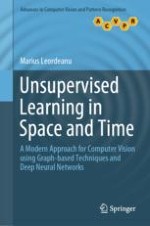This book addresses one of the most important unsolved problems in artificial intelligence: the task of learning, in an unsupervised manner, from massive quantities of spatiotemporal visual data that are available at low cost. The book covers important scientific discoveries and findings, with a focus on the latest advances in the field.
Presenting a coherent structure, the book logically connects novel mathematical formulations and efficient computational solutions for a range of unsupervised learning tasks, including visual feature matching, learning and classification, object discovery, and semantic segmentation in video. The final part of the book proposes a general strategy for visual learning over several generations of student-teacher neural networks, along with a unique view on the future of unsupervised learning in real-world contexts.
Offering a fresh approach to this difficult problem, several efficient, state-of-the-art unsupervised learning algorithms are reviewed in detail, complete with an analysis of their performance on various tasks, datasets, and experimental setups. By highlighting the interconnections between these methods, many seemingly diverse problems are elegantly brought together in a unified way.
Serving as an invaluable guide to the computational tools and algorithms required to tackle the exciting challenges in the field, this book is a must-read for graduate students seeking a greater understanding of unsupervised learning, as well as researchers in computer vision, machine learning, robotics, and related disciplines.
